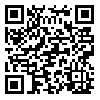دوره 22، شماره 1 - ( 1391 )
|
برگشت به فهرست نسخه ها
Download citation:
BibTeX | RIS | EndNote | Medlars | ProCite | Reference Manager | RefWorks
Send citation to:



BibTeX | RIS | EndNote | Medlars | ProCite | Reference Manager | RefWorks
Send citation to:
Islami S G, Ebrahimi S, Islami S Y. Confrontation of Iranian Contemporary Architecture with Electronic era. IJAUP 2012; 22 (1)
URL: http://ijaup.iust.ac.ir/article-1-81-fa.html
URL: http://ijaup.iust.ac.ir/article-1-81-fa.html
Confrontation of Iranian Contemporary Architecture with Electronic era. دانشگاه علم و صنعت ایران. 1391; 22 (1)
چکیده:
Technology has had many influences on the Iranian society in different eras. Today, information and telecommunication
technologies have revolutionized the basic structures of society and a new network society has been propagated inside the
traditional and semi-modern context. In countries like Iran, which are in the process of modernization, a chaos deriving from the
transition period is observed that leads to a certain peculiarity. In this transition era the norms of traditional societies, which
offer discipline for these societies, have been eliminated in favor of new norms that are not codified yet. The transformation to
the new situation and also the confrontation with the electronic world has instigated many disorders and anomalies in the society,
with its physical expression becoming visible in contemporary architecture. Today, Iranian architecture is affected by Kitsch Art
and has become superficial. Using attractive visual capsules and exploiting the human habit of imitation, information viruses
have spread everywhere and have changed the physical world dramatically. The propagation of networks has made this process
even faster. This paper reviews the confrontation of Iranian architecture with the electronic realm and investigates the role of
visual viruses in the formation of the physical fabric of Tehran. It is argued that in the future, emphasis on design supported by
collective intelligence [1] and individual creativity can decrease physical anomalies in the built environment.
نوع مطالعه: Research Paper |
موضوع مقاله:
Architecture
| بازنشر اطلاعات | |
 | این مقاله تحت شرایط Creative Commons Attribution-NonCommercial 4.0 International License قابل بازنشر است. |

